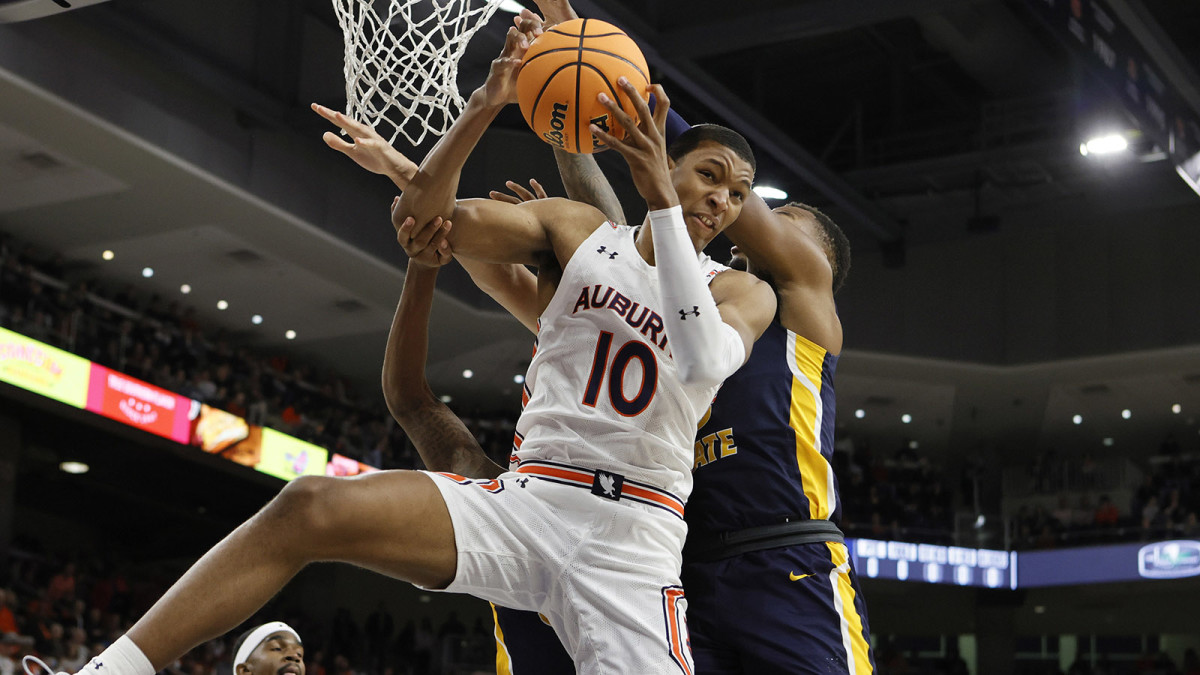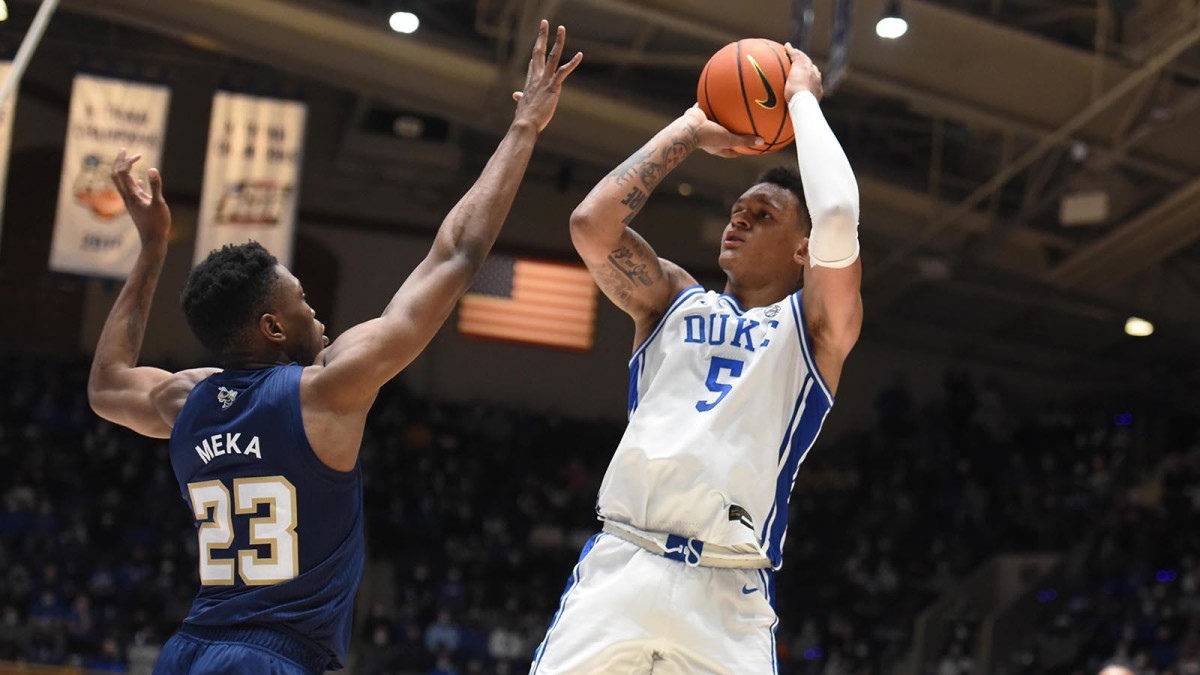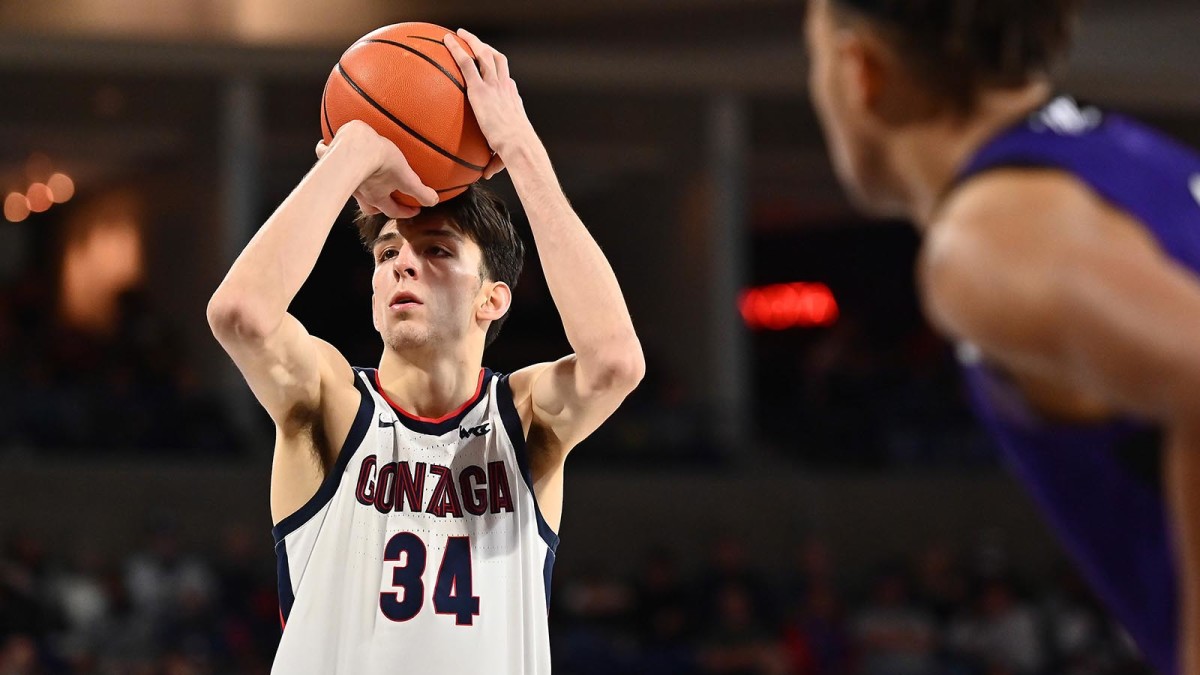2022 NBA Draft: Breaking Down the Candidates Vying for No. 1

The debate surrounding the No. 1 pick has narrowed as we near the season’s midway point, and while there’s not a firm consensus, the discussion has shifted meaningfully as teams start to form opinions in preparation for the pre-draft process in the spring.
Based on what I’ve gleaned over the past couple months from conversations with a wide range of NBA executives and scouts, this is currently a two-player race for the No. 1 spot, with Auburn’s Jabari Smith and Duke’s Paolo Banchero having separated from the pack. I ranked Smith as the draft’s top prospect after seeing him play live for the first time last month. Based on what we’ve seen to this point, I’d venture further and give Smith the edge as the slight favorite.

Smith’s emergence has been something of a sea change in the scope of the 2022 draft, considering the manner in which Banchero and Gonzaga’s Chet Holmgren led the preseason discussion among league personnel. But it hasn’t taken long for Smith to completely reframe once-modest expectations, first raising his profile in front of scouts in closed-door practices, then compiling a series of strong early-season performances that forced the issue. He’s been efficient, productive and vastly advanced for a player his age—he doesn’t turn 19 until May, making him the youngest player currently ranked in SI’s Top 10. It may sound crazy to label Smith as potentially a once-per-generation jump shooting prospect … but only until you watch him shoot up close.
Listed at 6' 10" with legitimate size and a frame that projects to add significant strength, Smith’s ability to knock down shots in gameflow has made him a highly effective scorer at this still-nascent phase of his development. He doesn’t hijack possessions and doesn’t demand the ball needlessly, but when the play finds him, he’s a threat to simply shoot over defenders from anywhere on the floor. He’s making the type of one-dribble pull-ups and off-balance leaners that most NBA players never perfect on a consistent basis. He has above-average vision and makes quick, effective pass-shoot decisions. And he’s barely old enough for jury duty.
The primary knocks on Smith right now are his rudimentary ball-handling skills and his sporadic struggles to get to the rim and finish. Those issues are connected and currently limit the variety of shots he’s able to create for himself, although I can’t emphasize enough how little that’s seemed to matter so far. The fact he’s a special jump shooter lowers the threshold for how creative a handler Smith needs to be in the NBA—it’s not like he needs to put the ball on the floor all that often to be effective, and it should remain easy for him to shoot over opponents while playing off one or two dribbles. It’s clear that even the toughest midrange shots are going to be more acceptable for him than most players. That part of his game is going to translate.
While Smith has a lot of room to improve his shooting footwork and expand his repertoire of moves, considering how effective he already is with just the basic tenets of his scoring toolbox, that’s an exciting proposition. His level of competitive focus and patience has been impressive. There are going to be games where he doesn’t touch the ball for long stretches due to how much freedom Auburn gives their shot-happy guards, and to Smith’s credit, he seems comfortable with that. He’s a work in progress defensively, but has at least been committed on that end and offers a physical presence when he sits in a stance on the perimeter. As he gets more comfortable handling the ball and making himself dangerous off the dribble, his playmaking skills should continue to manifest positively. It’s not hard to watch Smith, consider how unguardable the best tall jump shooters in the league can be, and see where this might be going.

Smith has an inarguable edge on Banchero in a few key areas: he’s a much better jump shooter, he’s a more projectable athlete, and he projects as a versatile team defender. To Banchero’s credit, those are maybe the only three areas in which he might leave you wanting more, but they’re potentially critical weaknesses. Banchero is an exceptionally polished prospect with advanced ball skills and has been a serious matchup problem for college defenders. If his jumper takes a big step forward, his ceiling shifts upward substantially.
Due to his mix of physical strength, finesse and scoring instincts, Banchero has drawn comparisons to mid-career Carmelo Anthony and current Julius Randle. He’s more unselfish with the ball than both players, but those names speak to the quality and breadth of his offensive skill set. He’s likely to be quite good on that end, with the capability to threaten defenses from all three levels of the floor. He was my projected top prospect to start the season for good reason.
Still, Banchero projects best as an offense-centric, true power forward. There tends to be an inflection point for even the best players of that archetype when their defensive impact lags well behind their offense. Banchero doesn’t boast immense positional length, nor does he wield high-end explosiveness in tight spaces, which caps his value on the defensive end and limits him as a rim protector. He’s smart and tough enough to add some value, which leaves room for optimism, but it’s hard to see him as a defensively adequate small-ball center, which is the role that could best optimize his offensive gifts. Banchero’s polish might make him a safer bet than Smith for an organization in need of an immediate rookie cornerstone—and there’s certainly an argument for him—but when we’re discussing long-term ceiling, Smith’s best case is better than anyone else’s, and it’s simply not that hard to see him adding the basic skill and physical elements he needs to access his considerable potential.
Which player goes first will still hinge on which team wins the lottery, but the vast majority of NBA evaluators I’ve spoken with have agreed that Smith and Banchero have set themselves apart as the top two prospects.

This leaves Holmgren as the guy who may anchor the next tier of players, more so than a true candidate for the top selection. That’s certainly not because Holmgren has played poorly—he’s been insanely efficient on offense and clearly among the top rim protectors in college basketball. But considering the potential Smith and Banchero offer as offensive focal points, it’s difficult to make an argument for Holmgren at No. 1 without ascribing a level of individual scoring upside that many scouts have a hard time comfortably projecting.
While it’s easy to look at Holmgren’s frame and wonder about his physical longevity, the more you watch him, the less risky he actually feels. He’s been quite dependable for Gonzaga while playing an offensive role that probably echoes the way he’ll function in the NBA. After seeing him play twice in person (against quality opponents in Duke and Texas Tech), I think his impressive rim protection translates meaningfully. The defense gives Holmgren a high floor: he’ll be able to move his feet, cover ground around the basket, take away drives as a team defender, and likely avoid getting posted up to his detriment, considering how the NBA plays now. He’s not going to be an elite offensive rebounder, and he gets pushed around in traffic, but you take the good with the bad.
The irony is that despite Holmgren’s unique array of ball skills at his size, which drove him to viral fame as a high schooler, his individual offense has still been heavily gameflow-dependent. To his credit, his shot selection has been excellent at Gonzaga, but he doesn’t move like a guy who’s going to break off plays and get a bucket, and he’s a bit slow-footed moving north-south. It’s fair to wonder how functionally dangerous Holmgren’s handle actually makes him in the halfcourt: he’s not especially fast getting past people, and he’s not the level of shooter to where you want him dribbling into tough, contested jumpers very often. His lack of physical heft dampens some of his threat going downhill into traffic.
Still, Holmgren is quite skilled for a 7-footer, has great touch around the basket, will be a capable jump shooter, and should be highly dangerous as a screener who can make plays and space the floor. Teams will be able to play him with a second big and experiment with configurations. Those have always been selling points. But for many scouts, it’s less a question of Holmgren’s ability and a matter of what it really adds up to—and, considering what Smith and Banchero have to offer, whether taking Holmgren ahead of either one is worth the opportunity cost.
It’s worth noting that a pair of Big Ten guards, Wisconsin’s Johnny Davis and Purdue’s Jaden Ivey, are currently forcing teams to think long and hard about who they’d take in the top five.
Watch NBA games online all season long with fuboTV: Start with a 7-day free trial!
The sum total of these shifts in the prospect hierarchy is a positive development for the overall strength of this draft class, which has been a challenge for many around the league to confidently gauge. Many prospective one-and-done freshmen have been inconsistent, yet the shifting demands and challenges players have faced due to COVID-19’s impact suggest that NBA teams exercise patience. Still, the ascension of Smith and Banchero as legitimate draft prizes, Holmgren’s reliability, and Davis and Ivey as top guards has teams breathing easier at the bottom of the standings. At the very least, there’s more security in that than most around the league expected a couple months ago.
More NBA Coverage:
• Kyrie Irving's Uneasy Return to the Court
• LeBron at Center? Lakers Might Be On to Something
• The Warriors' Quest to Achieve What Other Dynasties Couldn't
• NBA Year In Review: The Good, Bad and Ugly
Sports Illustrated may receive compensation for some links to products and services on this website.
